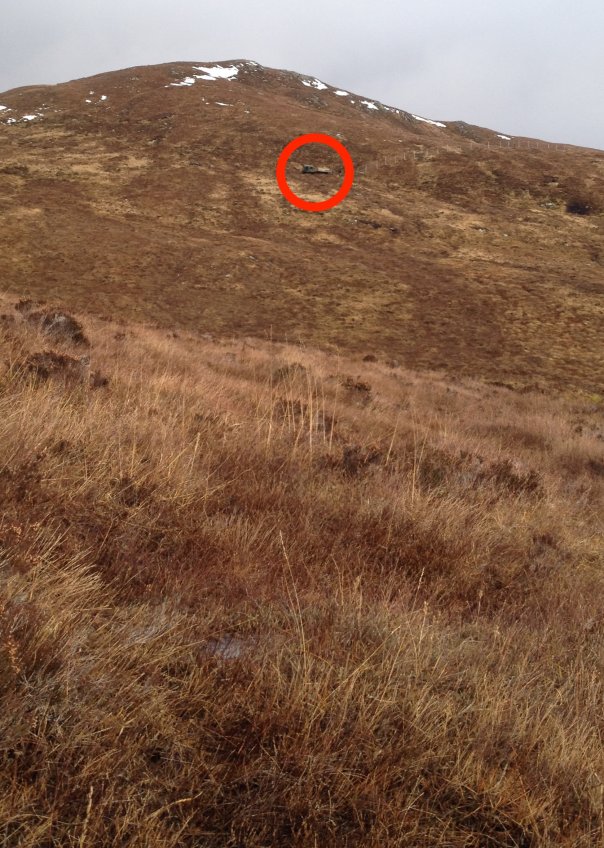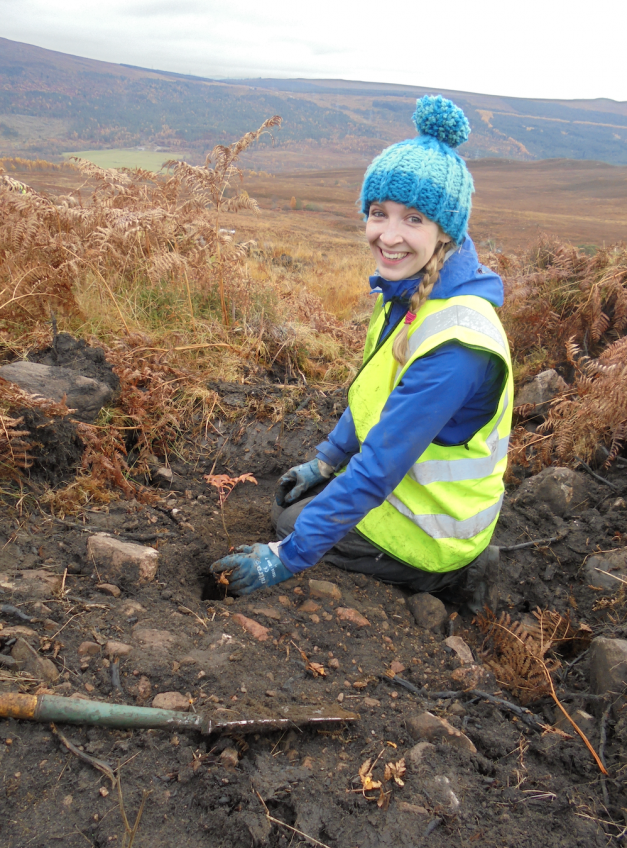Category: Blog
It was a momentous day on the 30th November 2016 when we closed the gate on a new exclosure at our Dundreggan Conservation Estate, watched over as we did so by two golden eagles.

Vehicle dwarfed by the landscape of Allt
Ruadh
The area which is now protected from deer grazing is called Allt Ruadh, Gaelic for The Red Burn and is 178 hectares in size. An international rugby pitch is roughly one hectare so imagine 178 rugby pitches and you will have some idea of the scale of the project. Within three to four years we expect to have around 250,000 native trees thriving here, protected from damaging deer grazing and growing from a mixture of planting and natural regeneration.

in a mound at Allt Ruadh
This is an exciting milestone in our journey to rewild Dundreggan. Once the trees return we can expect a boom in biodiversity as woodland-dependent wildlife, including different species of moss, lichen, orchids, fungi, ants, insects and other creatures find a home there. Red squirrels, Scottish crossbills and perhaps eventually wildcats could also benefit.
- All
- Blog
- Dundreggan
- Education
- General
- News
- Off the beaten track
- Press Release
- Projects
- Volunteer Voice
- Wildlife
